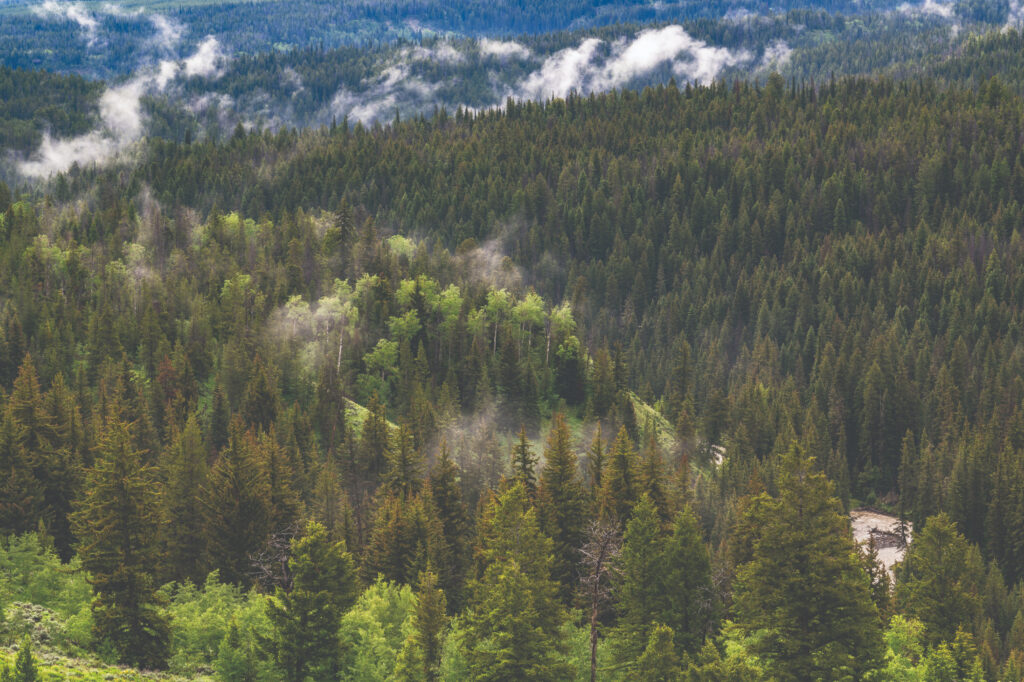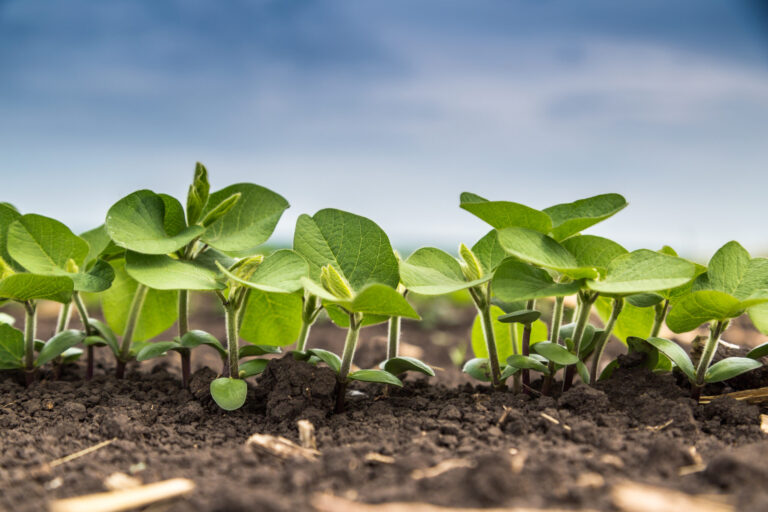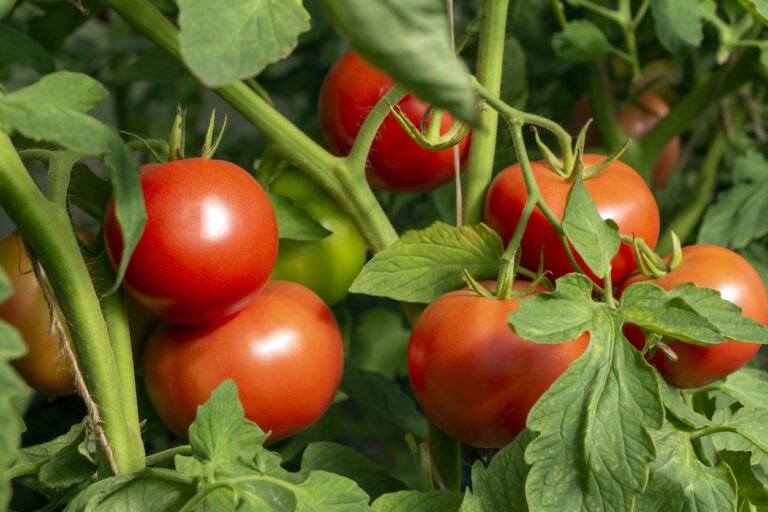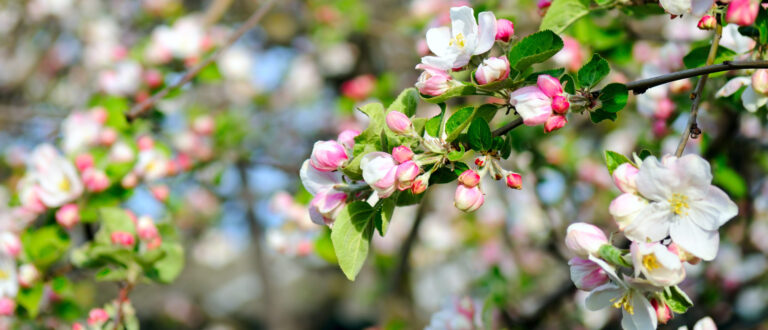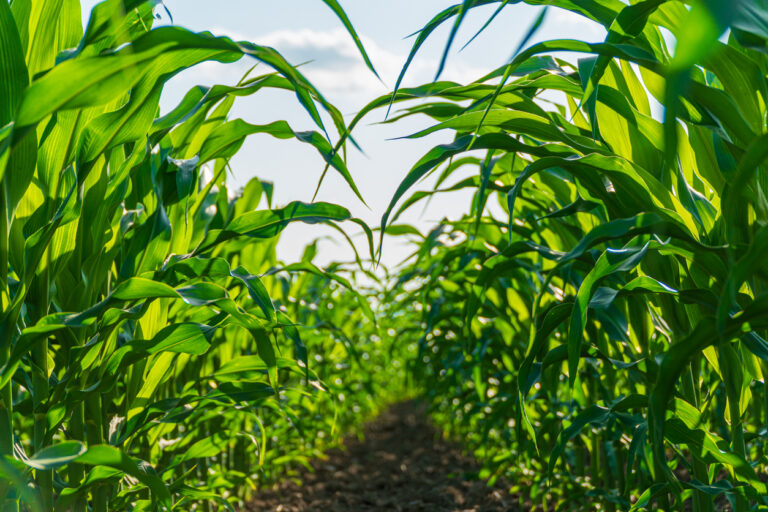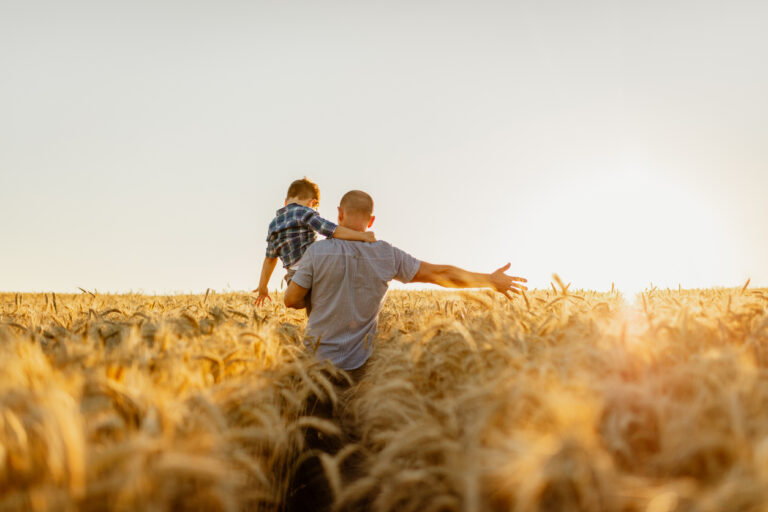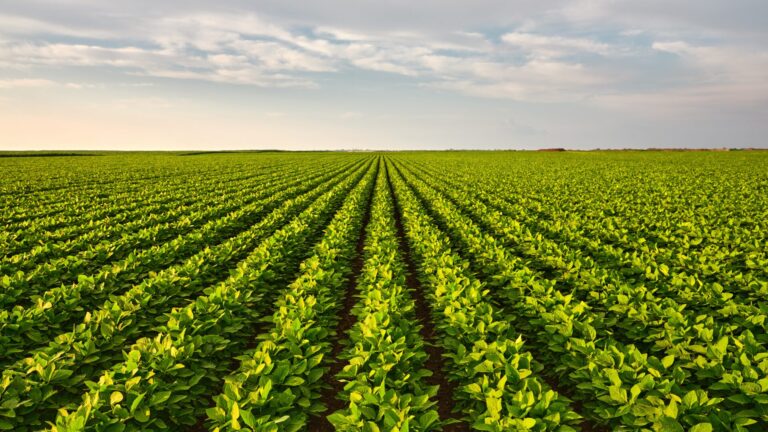With more than 15 billion trees lost on earth annually, protecting our forests from leaf defoliators is more important than ever. Foray® biological insecticide is an industry standard for many forest health managers due to its continued reliability and efficacy when protecting forests from native or invasive lepidopteran pests.
Foray®, a globally trusted formulation.
Foray has been protecting forests around the world for decades.
Its proven formulation allows aerial applicators to utilize “Ultra Low Volume” (ULV) applications to protect more hectares in a shorter amount of time. These highly technical ULV applications require attention to detail to ensure success of a program.
Here are some things to consider for your forest protection program when applying Btk with ULV.
Formulations
Foray® 48B and Foray® 76B
Foray 48B and 76B are water-based products designed/formulated specifically for forestry applications. Both formulations contain Bacillus thuringiensis spp. kurstaki (Btk ), an industry leader in the control of leaf defoliators, as an active ingredient. Foray is also formulated with built in surfactants allowing for optimal leaf coverage.
Forestry applications are unique as the target ”crop” (trees) vary significantly in terms of size, leaves, needles, etc. – making it very important to choose a product that not only can be effectively spread on the crop, but also contains a lethal dose for the target insects (in this case, always a lepidopteran caterpillar). Utilizing the highest standards in application technology, Foray 48B and 76B have been used in successful forest protection programs over millions of hectares around the world.
Droplet Size
The efficacy of a spray program greatly depends on the coverage of the leaf surface with the product.
Whether you are applying via air or ground, droplet size and distribution matters. How droplets split and spread after leaving spray equipment is vital in ensuring optimal coverage on the targeted area as well as the likelihood of the target insect ingesting the product.
Application technology has come a long way since the first aerial spray programs were conducted in the 1950’s. Improvements to application equipment led to more efficient programs and improved product efficacy globally. Today, the use of ULV applications is the standard for forestry. This means products, such as Btk, can be applied at rates of 1.5-4L/ha, allowing applicators to cover significant amounts of area with one load. These volumes are extremely low when considering the total volume applied to an entire hectare, therefore, droplet size is very important. An adequate number of droplets must be applied to ensure proper coverage of the forest canopy, while also ensuring each droplet contains enough of the active ingredient to be lethal to the target lepidopteran pest which they must ingest to be controlled.
To apply at such low volumes and small droplets, certain atomizers/nozzles must be used. One example of such atomizers is the Micronair® AU4000 or the AU5000. The Micronairs are developed by a UK-based company that specializes in rotary atomizer spray nozzles that produce droplets as low as 30 microns (even smaller for public health applications) in size. As previously mentioned, atomizing the droplets to a small size is vital for application efficacy and program success as it improves where the droplets land in the forest canopy and ensures there is a lethal dose in each drop.
The droplet size recommendation will change depending on the tree type (coniferous or deciduous).
Coniferous Applications
When applying to coniferous trees, droplet size is very important as the target foliage is much smaller than that of a deciduous tree. Producing such small droplets may cause concern as to whether the droplets will contain a lethal dose of the Btk; however, years of research and field executions have illustrated that is not an issue. Using atomizers (Micronair AU4000 or AU5000) and setting the droplet size to 80-120 µm are the preferred method of application.
Deciduous Applications
When applying to a deciduous forest, droplet size is still important; but the droplets can be a bit larger with a recommended range between 100-150 µm. Droplets that are 200 µm or above should be avoided and not applied as field work has illustrated that they are not as effective.
Environmental Conditions
When conducting ULV applications where the droplet size can be below 100 microns, it is equally important to consider the environmental conditions to ensure the droplets are reaching the desired target.
Temperature and humidity play an important role in determining the ideal time to spray. In the chart below, Valent BioSciences has outlined the ideal conditions for conducting an aerial or ground application of Foray. Prior to any application, it is advised that you reference the chart. If you apply outside of the “OK to Spray” area, you are at risk of reduced efficacy with your treatment program.
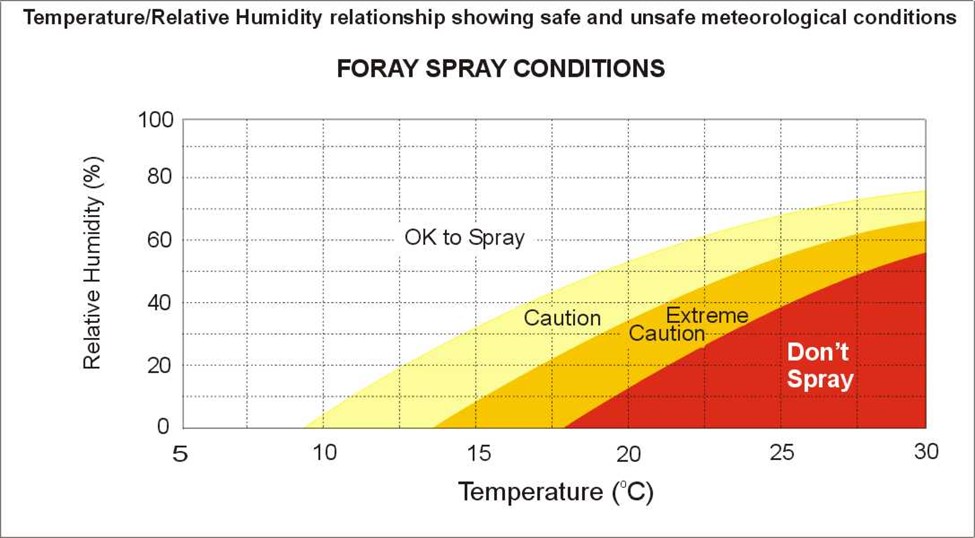
In summary, when applying Foray 48B or 76B, taking time to consider your nozzles, droplet size and environmental conditions are vital for a successful program. For detailed Foray application information, reach out to a specialist at Valent BioSciences or refer to our Foray Technical Manual.
